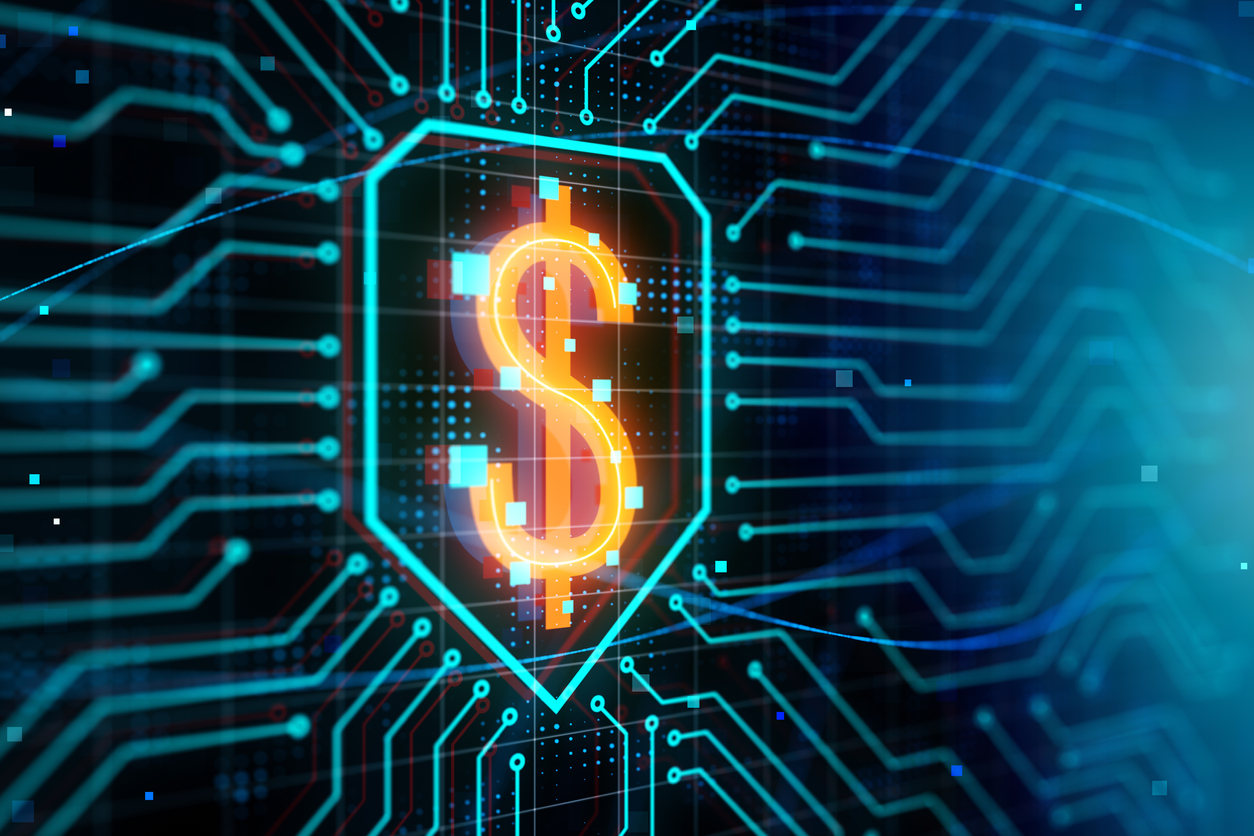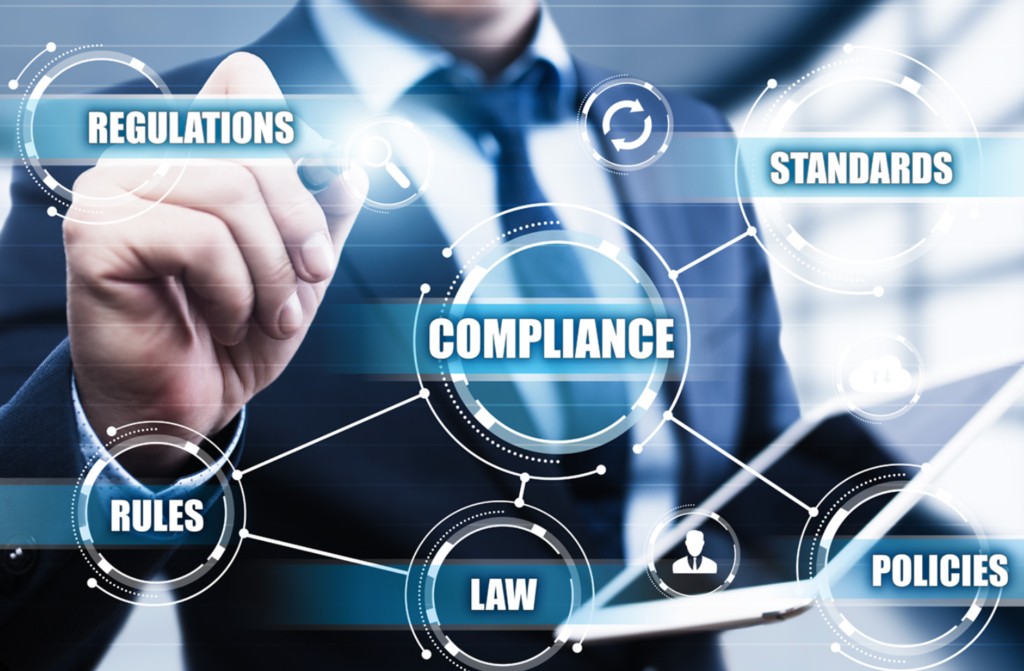Financial Data Security Essentials - Cyber Armor For Your Finances
Enhance your financial peace of mind with robust financial data security. Safeguard your sensitive information, transactions, and assets with cutting-edge technologies and industry-leading practices.
Author:Habiba AshtonReviewer:Liam EvansJan 02, 20243.3K Shares70.6K Views

In an era driven by digital advancements, the paramount importance of financial data securitycannot be overstated. The evolving landscape of finance demands a vigilant shield against potential threats, making robust data protection a cornerstone for individuals and businesses alike.
As we navigate the intricacies of modern financial transactions, the need for a comprehensive approach to security becomes imperative.
This introduction sets the stage for an exploration into the critical realm of Financial Data Security, where cutting-edge technologies and stringent measures converge to fortify the foundations of economic well-being.
What Is Financial Data Security?
Data security in financial services is a multifaceted concept that encompasses the protective measures and protocols employed to ensure the confidentiality, integrity, and availability of sensitive financial information.
In the digital age, where financial transactions and data storage predominantly occur online, the significance of robust security measures cannot be overstated.
At its core, Financial Data Security involves safeguarding information such as credit card details, bank account numbers, and personal identification information from unauthorized access, cyber threats, and fraudulent activities.
Financial institutions, businesses, and individuals alike must navigate a dynamic landscape of cyber threats, making compliance with data protection regulations, employee training, and the adoption of emerging technologies integral components of a comprehensive Financial Data Security strategy.
In essence, Financial Data Securityis a proactive and evolving discipline that seeks to fortify the foundations of economic transactions, ensuring a secure digital environment for financial interactions.
Why Financial Data Needs To Be Protected?
Laws such as the GDPR, or any other data privacy regulation, hold businesses directly responsible for guaranteeing the protection of financial data. They are also in charge of making sure that any outside providers they use to handle financial data are compliant.
GLBA Safeguard Rules
The FTC's GLBA Safeguards Rule, which went into effect this year, mandates that all financial professionals have a data security policy in place. It's important to comprehend this guideline since it places legal responsibility for safeguarding a customer's financial information on you.
Financial institutions and nearly all other businesses in the finance sector are subject to the Safeguards Rule. This covers mortgage brokers, individual lenders, payday loan providers, tax preparation firms, private lenders, and real estate appraisers.
It also covers third-party operators beyond a company's direct reach, such as credit bureaus and reporting agencies, manufacturers and leasing firms of ATMs, and any other business that handles a person's nonpublic personal information (NPI).
This means that you are accountable for the rules of your third-party providers in the same manner that you are accountable for your own business, just like you are for other data privacy laws.
For example, a US-based business is required by the GDPR to disclose the location of the processing and storage of payment data from its international clientele. A U.S. corporation must comply even if it only sometimes transacts business with citizens of the European Union.
Every data privacy law is similar in that it requires businesses to maintain systems that guard sensitive financial information against disclosure or unauthorized access, as well as to ensure safe data transit and storage. Regular audits are also necessary to make sure these policies and processes are operating as intended.
PCI-DSS
The Payment Card Industry Data Security Standard is applicable to banks, credit card firms, and anybody else handling or holding payment card information (PCI-DSS). The statute aims to prevent unlawful use of cardholder data and ensure the security of credit and payment card transactions.
Every organization's compliance status with PCI-DSS is validated annually, and compliance is based on 12 requirements.
Among the 12 prerequisites are:
- keeping sufficient firewalls in place to safeguard card and cardholder data.
- Install sufficient antivirus software and maintain its updates.
- Keep your apps and systems safe.
- Limit cardholder data access to those who truly "need to know."
- not use defaults or system passwords provided by the vendor.
- safeguarding cardholder data and stored cards.
- strong encryption for all data, both at rest and in transit.
- Every user having access to the system needs to be given a special identification number.
- Keep physical access to cards and cardholder data restricted.
- Keep an eye on every access to network resources and cardholder data.
- Regularly test security procedures and systems.
- Maintain and uphold an updated security policy for all contractors and employees.
Common Cybersecurity Threats In Financial Services
Attacks Using Social Engineering And Phishing
Social engineering and phishing attacks are frequent cybersecurity risks in the financial services industry. Cybercriminals use these assaults to fool people into disclosing their financial or personal information, frequently by pretending to be reputable organizations.
For example, they could send the person an email pretending to be their bank, requesting that they update their account information or validate a transaction.
Numerous cybersecurity precautions can aid in thwarting these attempts. These include employing multi-factor authentication to prevent unauthorized access even in the event that login credentials are compromised, educating customers about the dangers of phishing and social engineering assaults, and putting email filtering systems in place to block phishing communications.
Ransomware And Malware
Another frequent cybersecurity risk in the financial services industry is malware, which includes ransomware. Malware is malicious software that has the ability to obtain unauthorized access to computer systems, obstruct normal computer processes, and collect private data. Malware of the ransomware type encrypts files on a system and requests a ransom to unlock them.
Strong malware security is able to counter these threats. This includes installing and updating antivirus software, patching and updating systems to address vulnerabilities, keeping an eye out for malware in network traffic, and routinely backing up data to lessen the impact of ransomware attacks.
Distributed Denial Of Service Attacks
Cybercriminals use a Distributed Denial of Service (DDoS) attack to overload a network, service, or infrastructure with traffic, rendering it unavailable. DDoS attacks can be directed at financial institutions with the intention of causing service disruptions, causing financial losses, or serving as a diversion while the attackers try to compromise their systems.
Financial services firms have a number of options for defending against DDoS assaults. These include putting in place DDoS protection systems that are able to identify and lessen DDoS traffic, keeping redundant systems up-to-date to guarantee availability even in the event of an attack, and preparing for DDoS incidents in advance to guarantee a prompt and efficient reaction.
Insider Dangers
Cybersecurity dangers that come from inside the company are known as insider threats. These could be workers, subcontractors, or anybody else with permission to access the organization's data and systems. Since insider threats frequently have legitimate access and may be familiar with the systems and procedures of the organization, dealing with them can be very difficult.
Financial services companies prioritize access control, monitoring, and training as means of thwarting insider threats. It guarantees that people only have access to the information and platforms they require for their jobs, keeps an eye out for odd or suspicious activity, and teaches employees how to identify and handle cybersecurity threats.
API Vulnerabilities
In order to facilitate integration between various systems and services, the financial industry uses Application Programming Interfaces, or APIs. However, if APIs are not adequately secured, hackers may use them to obtain unauthorized access to data and systems.
By employing secure coding techniques, carrying out frequent security testing, and utilizing API security gateways, vulnerabilities in APIs can be fixed. Monitoring API activity and taking appropriate action in the event of a breach is another crucial step.
Financial Data Security Rules And Regulations
Financial institutions and businesses handling sensitive financial data are subject to a myriad of rules and regulations designed to ensure the secure handling of information. Complying with these guidelines is not just a legal obligation but a crucial step in building trust with customers and stakeholders.
- GDPR -The General Data Protection Regulation, applicable in the European Union, imposes stringent requirements on the processing and protection of personal data, including financial information. Companies handling the financial data of EU residents must adhere to GDPR principles, ensuring transparency, lawful processing, and the right to data protection.
- CCPA -The California Consumer Privacy Act focuses on the privacy rights of California residents, granting them control over their personal information, including financial data. Businesses falling under CCPA jurisdiction must disclose data practices, provide opt-out mechanisms, and implement robust security measures to protect financial information.
- PCI DSS (Payment Card Industry Data Security Standard) -Specifically targeting entities handling payment card information, PCI DSS outlines comprehensive security standards to protect against credit card fraud. Compliance involves secure processing, storage, and transmission of cardholder data, reducing the risk of unauthorized access and data breaches.
- FISMA (Federal Information Security Management Act) -In the United States, FISMA governs information security practices within federal agencies, including financial systems. It mandates a risk-based approach to secure information systems, emphasizing continuous monitoring, risk assessments, and the development of robust security programs.
- ISO/IEC 27001 -The ISO/IEC 27001 standard provides a framework for establishing, implementing, maintaining, and continually improving an information security management system (ISMS). Companies adopting this standard demonstrate a commitment to systematically managing financial data security risks and ensuring ongoing compliance.
- SEC Regulations -Financial institutions operating in the securities industry must adhere to SEC regulations, which include requirements for safeguarding customer information. This involves implementing policies and procedures to protect nonpublic personal information, including financial data.
How To Secure A Company's Financial Data?
In an era where businesses rely heavily on digital platforms and interconnected systems, the security of financial data is paramount.
Ensuring the confidentiality, integrity, and availability of sensitive financial information is not just a regulatory requirement but a fundamental responsibility for any organization. Here, we delve into eight proven strategies to keep a company's financial data secure.
- Comprehensive Encryption Protocols -Implementing robust encryption protocols is the cornerstone of financial data security. Encrypting data ensures that even if unauthorized access occurs, the information remains unreadable without the proper decryption key. This strategy applies not only to data in transit but also to stored data, providing a robust defense against potential breaches.
- Two-Factor Authentication (2FA) -Enhancing access controls through Two-Factor Authentication (2FA) is an effective way to bolster the security of financial systems. By requiring users to provide two distinct authentication factors, typically a password and a secondary verification method (such as a code sent to a mobile device), 2FA adds an extra layer of protection, significantly reducing the risk of unauthorized access.
- Regular Data Backups -Data loss can have severe consequences for any business, especially when it comes to financial information. Regular data backups are a crucial strategy to mitigate such risks. By routinely backing up financial data, companies can ensure quick recovery in the event of system failures, cyberattacks, or accidental data deletion. These backups should be stored securely, and restoration processes should be regularly tested.
- Strict Access Controls and User Permissions -Controlling access to financial data is a fundamental aspect of security. Limiting access to only those individuals who require it for their job roles reduces the likelihood of unauthorized access. Implementing a principle of least privilege ensures that users have the minimum level of access necessary to perform their duties, minimizing the potential impact of security breaches.
- Employee Training and Awareness Programs -Human error remains a significant factor in data breaches. Investing in comprehensive employee training and awareness programs is crucial to instill a culture of security within the organization. Employees should be educated about the importance of protecting financial data, recognizing phishing attempts, and following best practices for secure data handling.
- Regular Security Audits and Assessments -Conducting regular security audits and assessments is essential to identify vulnerabilities and weaknesses in the company's financial data security infrastructure. These assessments can include penetration testing, vulnerability scans, and compliance audits. By proactively addressing potential issues, organizations can stay ahead of emerging threats and continuously improve their security posture.
- Compliance with Data Protection Regulations -Adherence to data protection regulations is not only a legal requirement but also a critical aspect of maintaining financial data security. Companies must stay informed about and comply with relevant regulations such as GDPR, CCPA, and industry-specific standards. This includes implementing necessary measures to protect customer data, providing transparency about data processing practices, and promptly reporting any breaches as required by law.
- Integration of Advanced Technologies -Embracing advanced technologies can provide an extra layer of defense against evolving cyber threats. Technologies such as artificial intelligence and machine learning can analyze patterns and detect anomalies in real-time, enabling quicker responses to potential security incidents. Additionally, blockchain technology holds promise in enhancing the transparency and immutability of financial transactions.
Financial Data Security - FAQs
How Do Encryption Technologies Contribute To Financial Data Security?
Encryption technologies encode financial data, making it unreadable without the proper decryption key, thereby ensuring confidentiality and integrity.
What Role Does Two-factor Authentication Play In Financial Data Security?
Two-factor authentication adds an extra layer of security by requiring users to provide two different authentication factors, enhancing access control and minimizing the risk of unauthorized access.
Why Is Regular Data Backup Crucial For Financial Data Security?
Regular data backups serve as a failsafe against data loss, allowing for quick recovery in the event of a security breach, system failure, or other unforeseen incidents.
How Can Individuals Enhance Their Own Financial Data Security?
Individuals can enhance security by using strong, unique passwords, regularly monitoring their financial accounts, and being cautious of phishing attempts and suspicious emails.
What Emerging Technologies Are Shaping The Future Of Financial Data Security?
Emerging technologies such as blockchain, artificial intelligence, and machine learning are being explored to fortify Financial Data Security, offering innovative solutions to combat evolving cyber threats.
Final Words
In the ever-expanding digital realm, the conclusion is drawn – safeguarding financial data is not just a choice but a responsibility. Through the intricacies of financial data security, the message resounds: proactive measures and state-of-the-art solutions are indispensable.
In fortifying the bulwarks against cyber threats, we pave the way for a secure financial future. The synergy of technology, awareness, and diligence becomes the key to preserving the integrity of financial data, ensuring a resilient foundation for economic transactions in the dynamic landscapes of tomorrow.

Habiba Ashton
Author

Liam Evans
Reviewer
Latest Articles
Popular Articles

